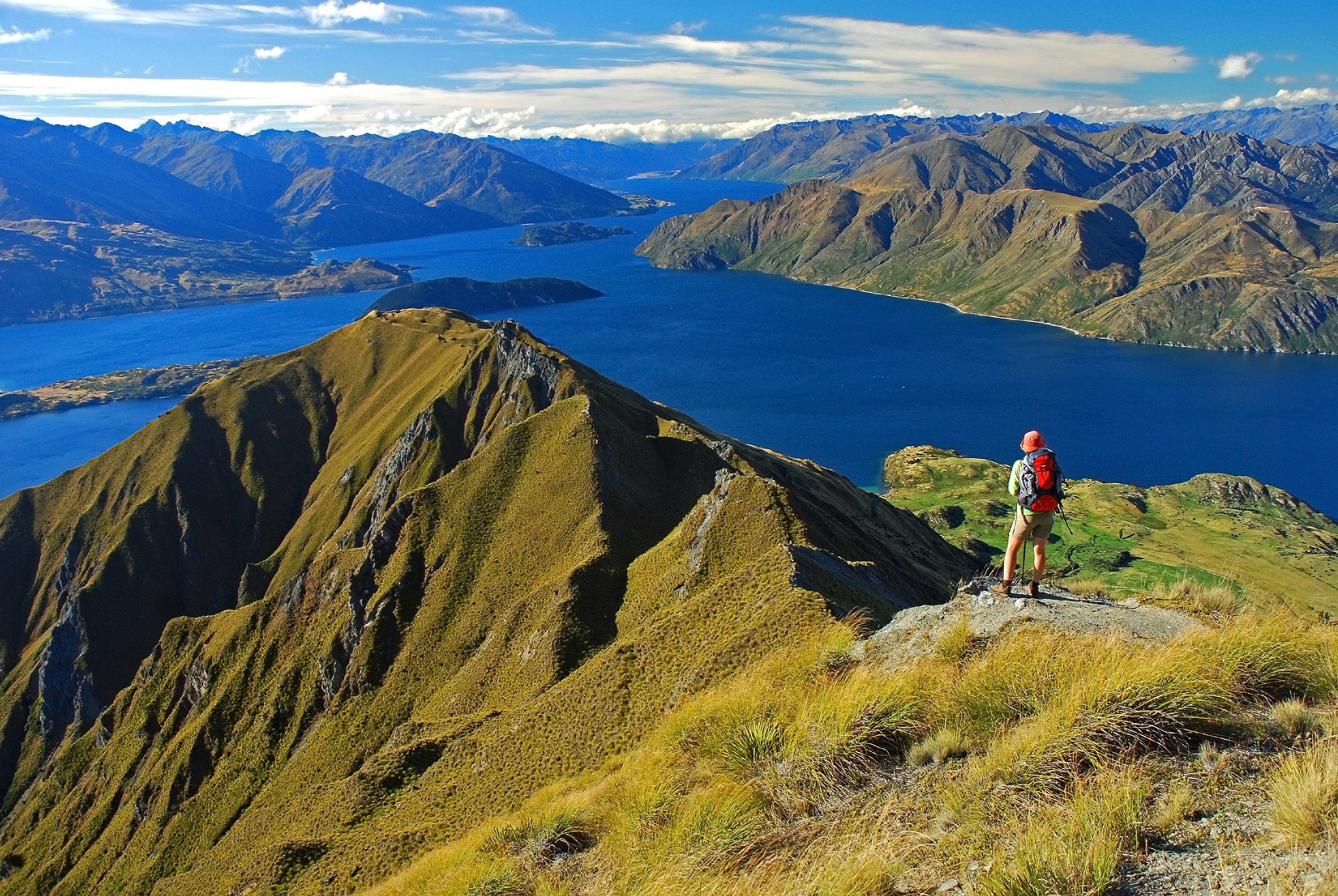
New Zealand Travel Guide
Discover New Zealand
Travelers are drawn to New Zealand’s breathtaking natural beauty and diverse landscapes. From inviting Bay of Islands beaches, to ice-sculpted Southern Alps peaks, there is a full range of ecosystems to explore, along with ample choice of ways to enjoy the outdoors from hiking to kayaking. New Zealand is also the birthplace of modern bungee jumping. It’s home to unusual bird life, including the iconic kiwi, kea, kakapo and three species of penguin. Culturally, visitors can learn about indigenous Maori traditions, such as the dramatic haka war dance and powhiri welcoming ceremony. More recent history centers around sheep and cattle ranching, which began in the 1800s and continues today. There is much to explore in a relatively small area on New Zealand’s North and South Islands.
Planning a trip to New Zealand? Read on to find out when to visit, what to do, and more to make your vacation unforgettable.
What is the best time to visit New Zealand?
Choosing the time of year to visit New Zealand depends largely on which activities are at the top of your list and whether you want to visit the North or South Island, or combine both in one trip, which is certainly possible. Keep in mind that New Zealand is in the southern hemisphere, so their seasons are the reverse of those we are used to in the northern hemisphere. Long sunny summer days await those weary of the northern winters.
Summer (December-February) is when the weather is warm and days are long, making it an excellent time for outdoor activities such as hiking, kayaking and picnics. The South Island in particular is at its prime for swimming in cool river pools, visiting wineries and tramping along historic pioneer trails.
Fall (March-May) still has inviting weather but fewer travelers and autumn foliage painting the landscape in its warm colors. It’s ideal for those who want to take the road less traveled and have more time to explore the culture and scenery. Hike through forest, explore glaciers and volcanic geology, and get some city time in Auckland or Wellington without the crowds.
Winter (June-August) is the time for snow sports, particularly on the South Island. Meanwhile, on the North Island geothermal pools beckon. Overall, temperatures are cool and days are short.
Spring (September-November) brings blooming wildflowers and good chances to spot elusive wildlife. Gardens on the North Island are at their best during these months. Similar to fall, there are fewer travelers than during the more popular summer months. Be prepared for somewhat unpredictable weather, keeping your rain jacket handy.
New Zealand’s weather can be changeable at any time of year. Be sure to dress in layers as you can experience sun rain, and even snow all in one day! Our experienced travel consultants are here to help you determine the best option for your dream trip.
What is the best way to get to New Zealand?
From the United States, there are nonstop flights from Honolulu, Los Angeles, San Francisco, Houston and Chicago to Auckland on the North Island. From there, domestic flights connect travelers with in-country destinations on both the North and South Islands. The average flight time is 13 hours.
New Zealand has international airports in Auckland, Wellington, and Christchurch served by flights from Australia and other nearby nations if you are planning a multi-country adventure.
How to get around New Zealand?
With relatively short spans of distance between points of interest, driving is a popular choice. Traffic flows on the left side, and vehicles are configured accordingly, which takes some getting used to for US drivers. Roads are generally well maintained but can be winding in hilly and rural areas, so drivers should exercise extra caution. Comfortable private busses leave the driving to experienced professionals so you can take in the spectacular scenery along the route without distraction.
For inter-island travel, domestic flights are a convenient option, with regular services connecting the North and South Islands. Air travel is the fastest way to cover longer distances and to travel between major hubs like Auckland, Wellington and Christchurch, but may have baggage restrictions.
Within cities, walking and cycling are great options for getting around, as New Zealand cities are generally compact and pedestrian-friendly. Exploring on foot is also a wonderful way to step into the countryside with hikes (or tramps, as they are called locally) through National Parks and other wild places.
Our New Zealand South Island Hiking Tour covers sections of four of New Zealand’s Great Walks and passes marvelous fjords, glaciers, mountains, lakes and rivers. You also get to cross lakes by water taxi, cruise along the coast watching for whales and zip along on a jetboat river safari.
Do I need a visa to visit New Zealand?
American citizens can visit New Zealand for up to three months without a visa. Citizens of other countries may need a visa and should check with the Embassy of New Zealand for the requirements. Visa processing times vary so if you do need a visa, be sure to apply well in advance of your intended travel dates.
How many days should I spend in New Zealand?
New Zealand offers a wide range of experiences, from stunning natural landscapes to cultural attractions, adventure sports, and outdoor activities. Choosing how long to stay depends on your availability as much as what you want to see and do while there.
If you have limited time, a lot can be covered in less than 2 weeks, particularly if you focus on either the North or South Island, not both. For example, you could focus on the North Island, exploring Auckland, Rotorua, and the Waitomo Caves, or you could spend your time on the South Island, taking in Queenstown and Fiordland.
With two to three weeks, you can get a more comprehensive New Zealand experience. You’ll have time to explore both the North and South Islands, including major cities, national parks, and scenic drives. This allows for a more relaxed pace and the opportunity to delve deeper into the local culture and outdoor activities.
Our New Zealand North Island Hiking Tour packs hiking through lava fields and rain forest, wine tasting, Maori rock carvings, scenic trail picnics and more into nine days. If you have longer, combine it with our New Zealand South Islands Hiking Tour for a comprehensive look at the country.
What are the top 5 places to visit in New Zealand?
1. Fiordland National Park
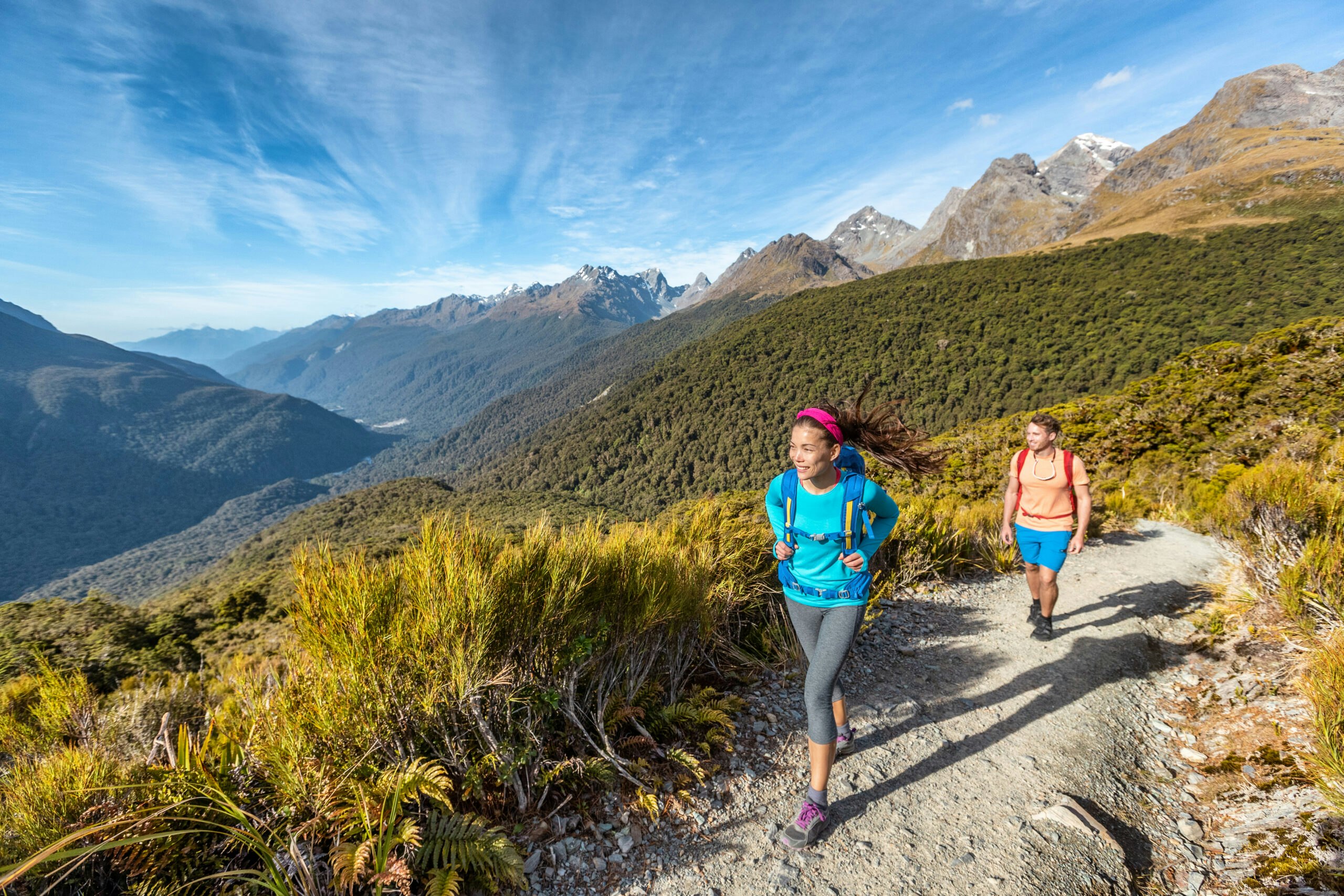
Located on the South Island, Fiordland National Park is a pristine wilderness that captivates visitors with its dramatic landscapes and untouched beauty. This UNESCO World Heritage-listed park is home to some of the world’s most breathtaking fiords, such as Milford Sound and Doubtful Sound, featuring sheer cliffs, cascading waterfalls, and lush rainforests. Steeped in natural wonder, Fiordland offers countless opportunities for outdoor adventure, including hiking along the Milford Track, one of New Zealand’s Great Walks. Here, you’ll encounter an array of wildlife, from fur seals to endemic birds like the kea and the rare Fiordland crested penguin. Cruises, kayaking, and hiking in this pristine wilderness are unforgettable experiences.
2. Queenstown
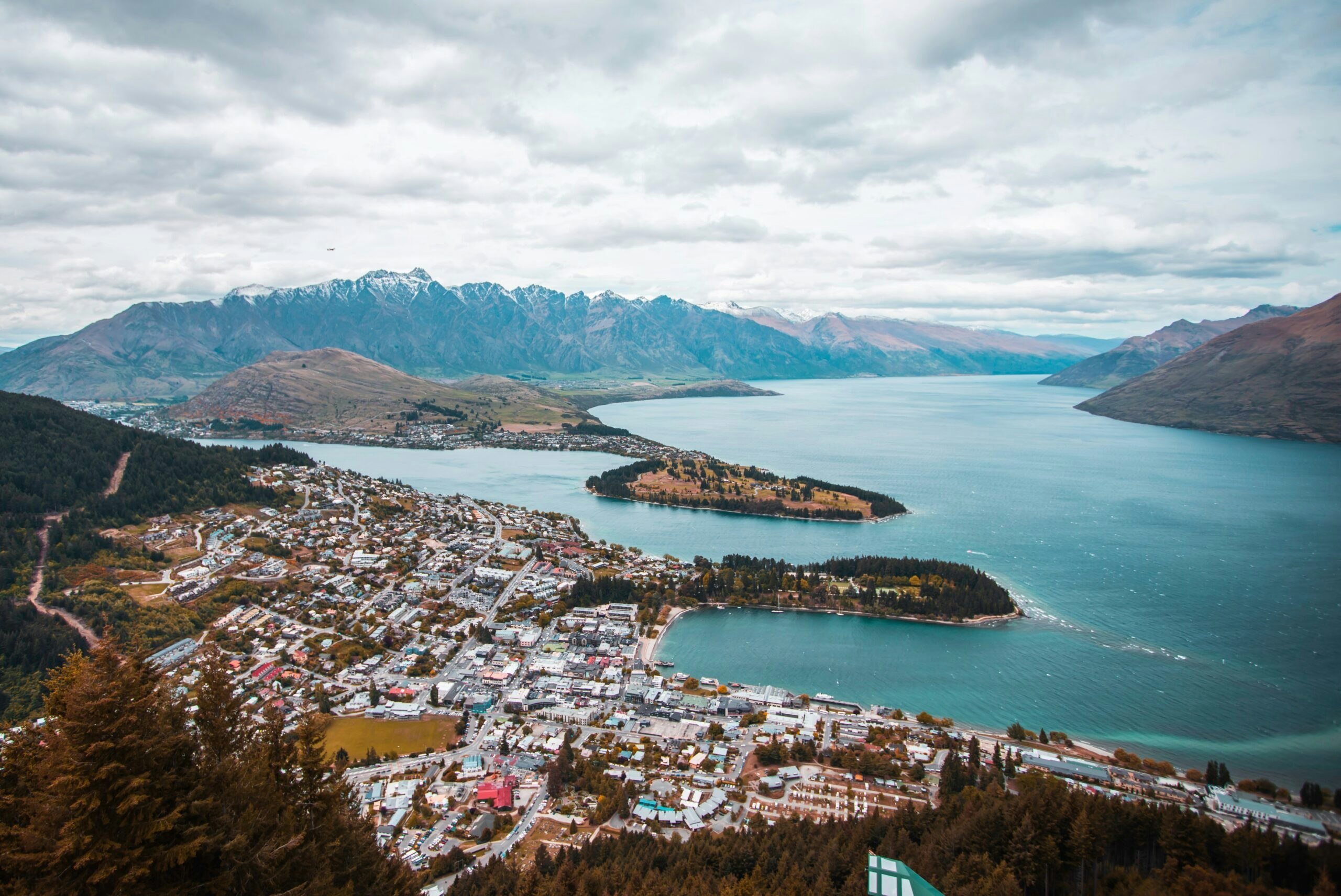
Nestled on the shores of Lake Wakatipu and surrounded by the dramatic Southern Alps, Queenstown is a picturesque town on New Zealand’s South Island renowned for its breathtaking landscapes and adventurous spirit. Known as the adventure capital of the world, Queenstown offers a wide range of outdoor activities, from bungee jumping off the iconic Kawarau Bridge to jet boating through the narrow canyons of the Shotover River. Yet, Queenstown’s appeal extends beyond thrill-seekers, with a vibrant culinary scene, world-class wineries, and a lively arts and culture community. Surrounded by a plethora of hiking trails, including the famous Routeburn Track, and just a short drive from the skiing mecca of The Remarkables and Coronet Peak, Queenstown is a year-round destination for outdoor enthusiasts.
3. Rotorua
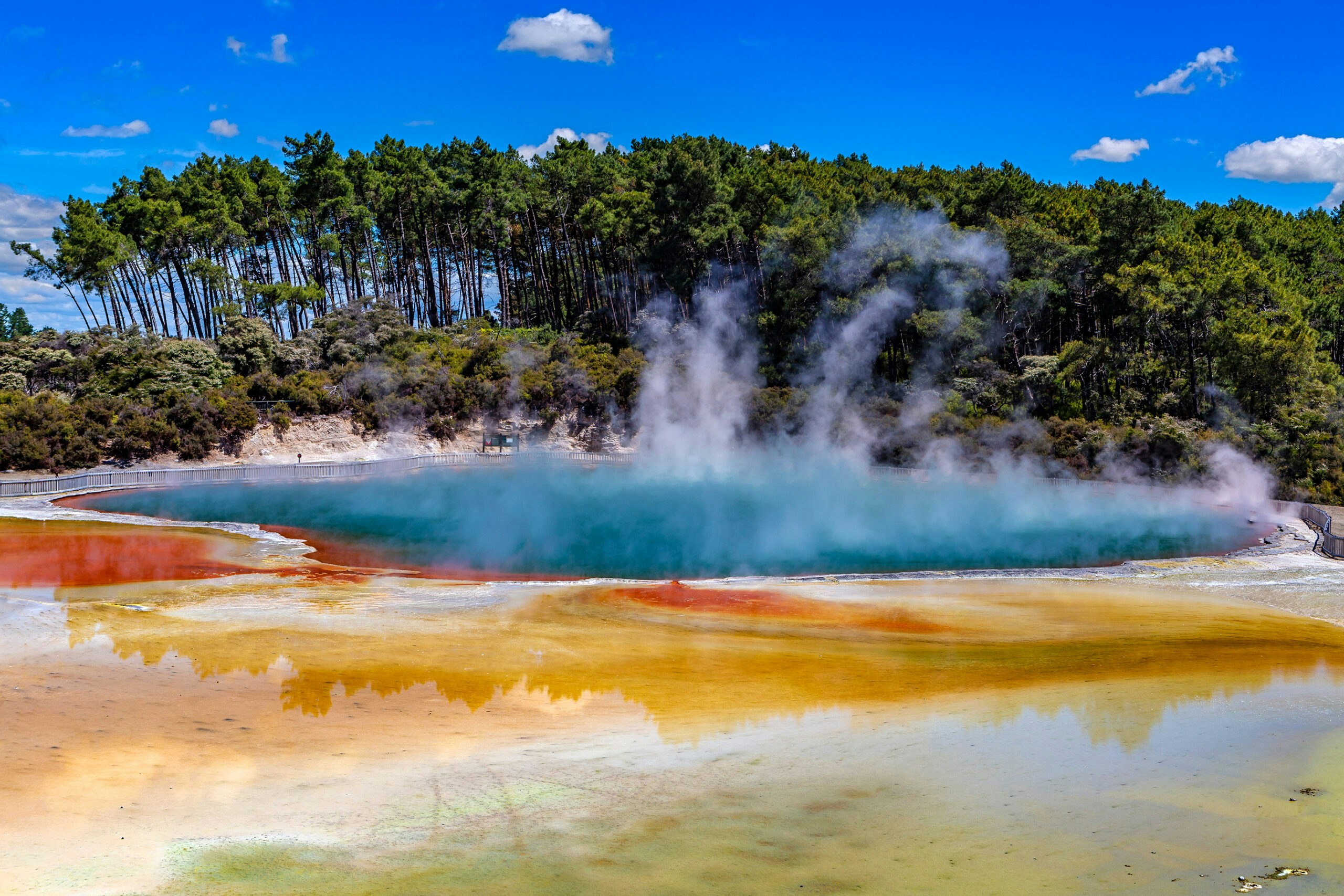
Rotorua, located on New Zealand’s North Island, is a unique and enchanting destination known for its captivating geothermal wonders and rich Maori culture. Steaming geysers, bubbling mud pools, and colorful mineral terraces make up the otherworldly landscape of this geothermal hotspot. The town’s distinct sulfuric scent and the powerful Pohutu Geyser are among its many natural marvels. Rotorua also offers an immersive cultural experience, with the opportunity to learn about and participate in traditional Maori customs, such as haka dance performances and feasting on a hangi-cooked meal. The region’s lush forests, crystal-clear lakes, and adventurous activities like ziplining and mountain biking add to its charm.
4. Auckland
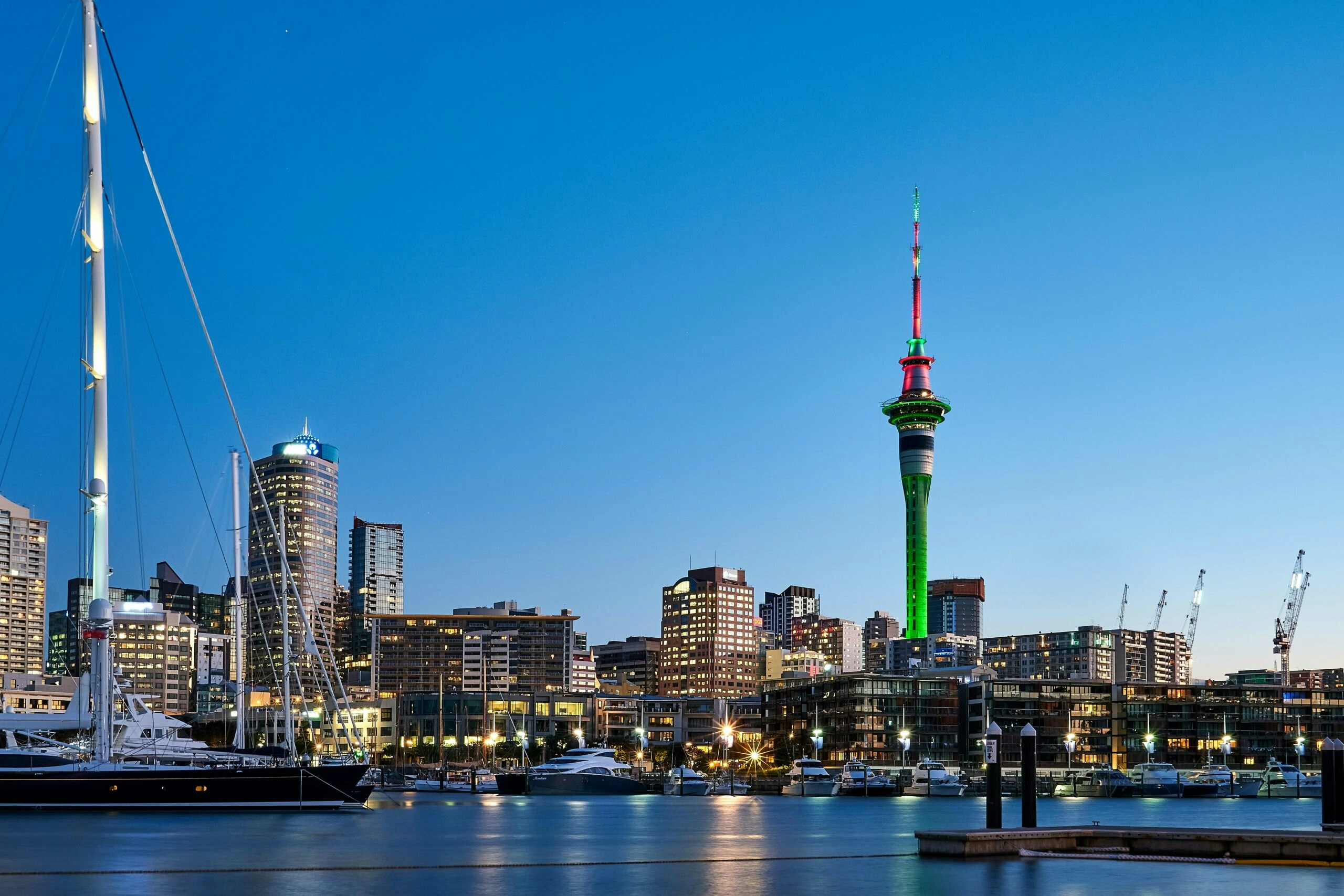
Auckland, New Zealand’s largest and most cosmopolitan city, is a vibrant urban hub that elegantly merges with stunning natural beauty. Situated on the North Island, Auckland is often referred to as the “City of Sails” due to its picturesque harbors and the abundance of sailboats dotting its waters. Auckland’s diverse cultural scene is reflected in its numerous museums, galleries, and markets, providing a glimpse into both indigenous Maori heritage and contemporary New Zealand culture. Beyond the city limits, the “City of Volcanoes” features several dormant volcanoes, such as Mount Eden, offering spectacular viewpoints of the region.
5. Tongariro National Park
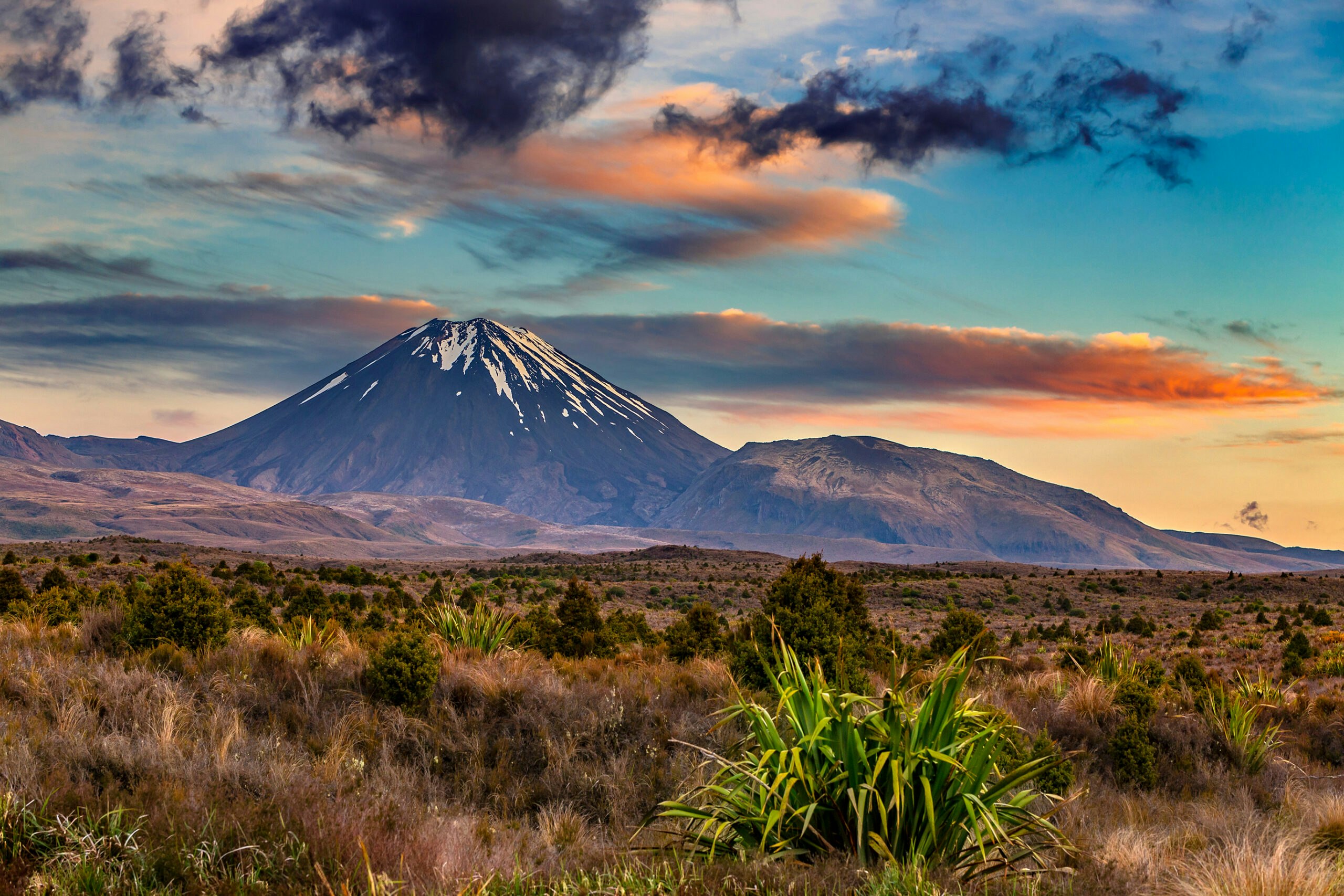
Tongariro National Park, situated in the central North Island of New Zealand, is a UNESCO World Heritage site renowned for its mesmerizing volcanic landscapes and significant cultural significance. The park encompasses three active volcanoes, including Mount Tongariro and the iconic Mount Ngauruhoe, which served as the inspiration for Mount Doom in the “Lord of the Rings” films. Hiking enthusiasts are drawn to the park for the world-famous Tongariro Alpine Crossing, a challenging day hike that traverses emerald lakes, steaming vents, and dramatic craters, offering breathtaking panoramic vistas along the way. Beyond its geological marvels, Tongariro National Park holds deep cultural importance to the Maori people, with sacred sites and stories woven into the land.
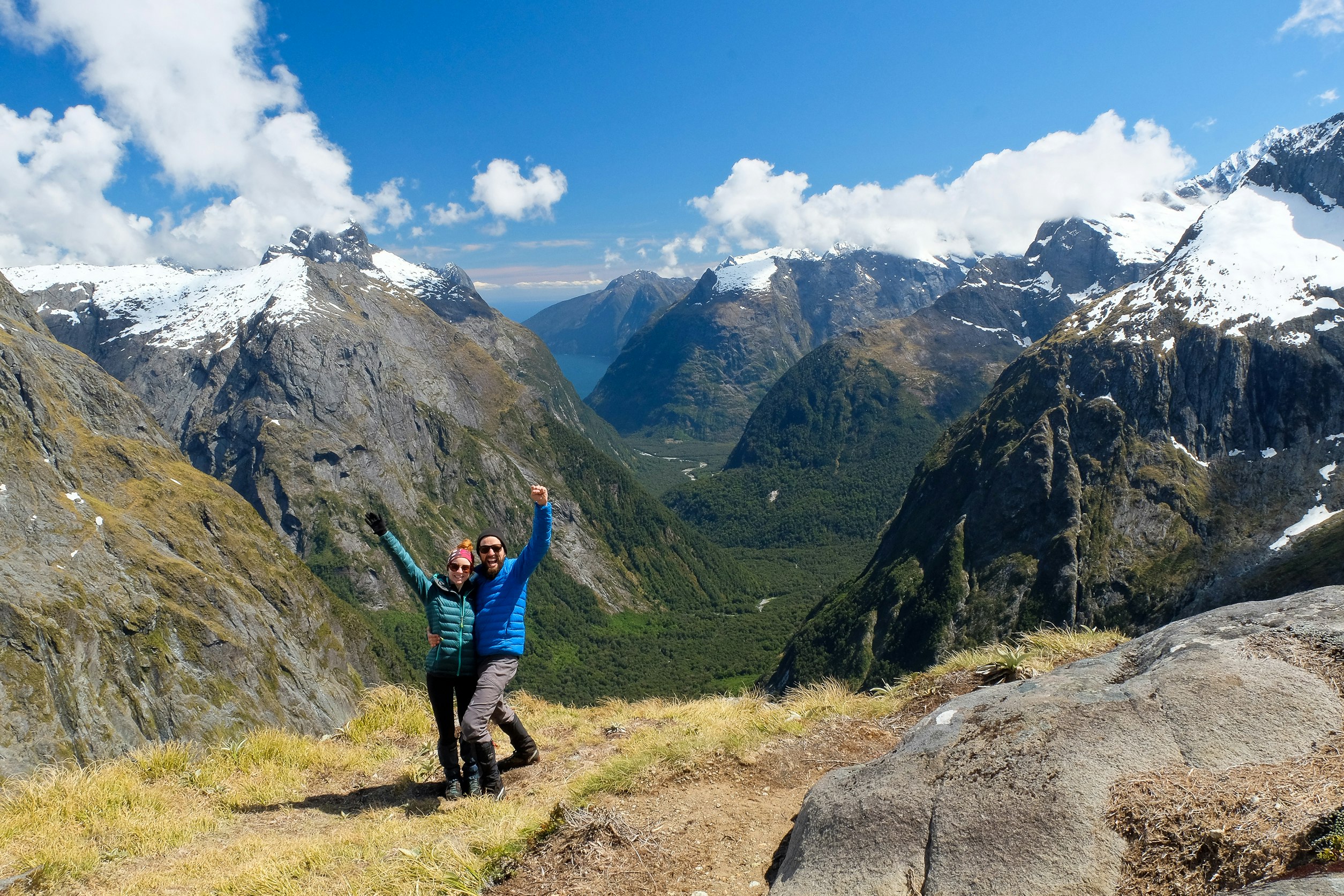
What are the best adventure tours in New Zealand?
1. New Zealand South Island Hiking Tour
With its glorious fjords, glaciers, mountains, lakes, rivers, and tracks that crisscross it all, New Zealand’s rugged South Island is a hiker’s dream. On this amazing journey, follow trails in Abel Tasman, Paparoa, Nelson Lakes, and Fiordland National Parks. Experience the Fox Glacier up close, and marvel at Punakaiki’s Pancake Rocks and Blowholes. Hike sections of four Great Walks including the Kepler and Routeburn Tracks! Take an exciting jetboat safari, cruise spectacular Milford Sound, soak in soothing hot pools, and experience Maori culture firsthand. Along the way, relax in comfortable hotels, taste world-class wine, and encounter an array of native wildlife. Discover the wonder of New Zealand on one of our most popular hiking adventures!
2. New Zealand North Island Hiking Tour
Delight in the many wonders that bless the magnificent North Island of New Zealand. Begin with a wine tasting on Waiheke Island, marvel at the geothermal features of Rotorua, then walk underneath sky-high trees of the Whirinaki rainforest. Hike through lava valleys to active volcanoes in the world-famous Tongariro National Park and soak up the surreal colors of Waiotapu – a thermal wonderland! Sip coffee while you explore the waterfront harbor city of Wellington. Comfortable accommodations and an eclectic mix of restaurants will make your evenings just as enjoyable as days spent outdoors. Pair this journey with our New Zealand South Island Hiking adventure for the full New Zealand experience.
Where are the best places to stay in New Zealand?
New Zealand offers a wide range of accommodation options from award-winning luxury lodges to personality-packed intimate boutique hotels and budget-conscious accommodations. The best place to stay often depends more on location than amenities, particularly if you are planning around hiking trails and other outdoor adventures.
1. Huka Lodge, Taupo
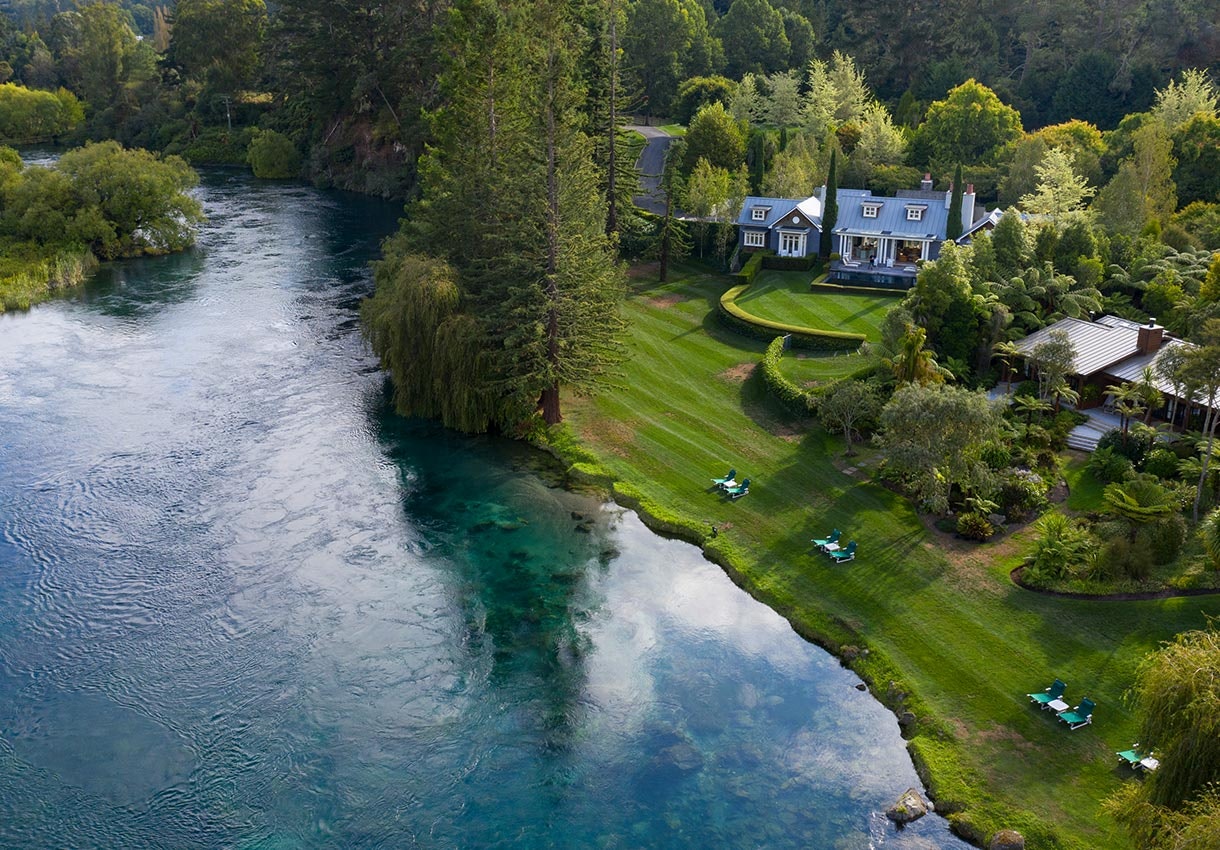
Located on the banks of the rushing Waikato River on the North Island of New Zealand, Huka Lodge started off in the 1920’s as a fishing camp. Today its known as a luxury retreat and with celebrated service and gorgeous gardens. Twenty guest cottages and two residences are nestled into the landscape with plenty of private spots for lounging and dining in the fresh air. The restaurant showcases New Zealand’s finest produce and stocks a vast wine cellar for perfect pairings.
2. The Farm at Cape Kidnappers, Hawke’s Bay

Also on the North Island, the Relais & Chateau property is set on rolling hills and rugged coastal cliffs with breathtaking views over the Pacific. An active 6,00-acre sheep and cattle ranch the Farm has also created The Cape Sanctuary to restore threatened communities of birds, reptiles and invertebrates. Meals are prepared with produce from the onsite gardens. Golfers will find a par 71 course tucked into the ridge and valley landscape.
3. Heritage Hotel, Auckland

The historic landmark Farmers Department Store building has been repurposed as a well-located hotel with a rooftop swimming pool and Jacuzzi. The perfect base to explore North Island Waitemata Harbour, amazing restaurants, bars and other exciting experiences in this cosmopolitan city where you can be on the water, in the bush, or up a mountain within minutes of the city center.
4. Distinction Fox Glacier Te Weheka, Southern Alps

Tucked beneath the towering Southern Alps on New Zealand’s west coast, this boutique property is ideally located a short distance from glacier valley hikes, geothermal pools, Lake Matheson and glacier ice walks. Each of its 20 rooms feature private balconies. The region’s Te Wahipounamu is a UNESCO-protected park shaped by glaciation and adorned with southern beech and podocarp forest.
Things to know about New Zealand
Most people know New Zealand served as the backdrop to the film adaptations of J.R.R. Tolkien’s Lord of the rings series, but there are many more interesting facts about the country. There are no native snake species here, but differing evolutionary pressures produced some unique birds, such as the flightless kiwi and the world’s only alpine parrot, the kea. New Zealand was the first self-governing country to give women the right to vote in 1893 and speaking of people, the population is relatively small but there are 3 sheep for every person, earning New Zealand the nickname “Land of the Long White Cloud.”
What is the language in New Zealand?
English is the predominant language spoken by the majority of the population and is used in government, education, business, and daily life. However, Te Reo Māori, the language of the indigenous Māori people, is also an official language and holds cultural significance. Efforts have been made to promote and preserve Māori language and culture in New Zealand, with Māori being taught in schools and used in various aspects of public life. Bilingual signage, Māori place names, and cultural protocols are observed throughout the country, particularly in regions with a significant Māori population.
What to eat in New Zealand?
Unsurprisingly in a country with so many sheep, New Zealand is well known for its lamb, served grilled, stewed and many other ways. Fertile fields yield a rich variety of produce including kiwifruit, feijoas, and sweet potatoes. Pair these with artisan cheeses and local wines from the acclaimed wine regions, like Marlborough, for a delectable farm-to-table experience.
A Māori tradition you’ll want to try is the hangi, where meats and vegetables are slow-cooked in an earth oven resulting in succulent, tender meat infused with deep earthy flavors.
Seafood is an important part of New Zeland cuisine, with green-lipped mussels, abalone, and fish and chips made with locally-caught snapper or hoki being some of the classic favorites. For dessert try a pavlova, made with meringue, cream and fresh fruits.
What is the currency in New Zealand?
New Zealand’s currency is the New Zealand Dollar (NZD). he currency is issued in both coins and banknotes, with coins denominated in 10, 20, and 50 cents, as well as $1 and $2, while banknotes are available in denominations of $5, $10, $20, $50, and $100.
New Zealand has a modern and efficient banking system, and ATMs are readily available throughout the country, making it convenient for travelers to access cash or make withdrawals using international credit or debit cards. Banks have limited hours, so are not as accessible for changing money. Credit cards are widely accepted, with Visa and MasterCard being the most commonly used, although American Express and Diners Club are also accepted in many places. It’s a good practice to compare exchange rates and fees at different locations to ensure you get the best deal when converting your money in New Zealand.
What is the electricity in New Zealand?
New Zealand is on the 230V system. Check the voltage on your personal electronics chargers to determine if you need a voltage converter. They use Type I outlets, which have 3 flat pins arranged in a triangular pattern. US and European travelers will need an adapter to plug in their devices. A good resource to see images of plug types is www.power-plugs-sockets.com.
Keep in mind that while hotels will usually have a safe in the room, they often are not big enough to store a laptop or tablet.
What is the time zone in New Zealand?
New Zealand operates on New Zealand Standard Time (NZST) during the non-daylight saving period. NZST is 12 hours ahead of Coordinated Universal Time (UTC+12).
However, New Zealand observes daylight saving time, which is known as New Zealand Daylight Time (NZDT), during the summer months. During this period, the clocks are set forward by one hour. NZDT is 13 hours ahead of Coordinated Universal Time (UTC+13). Daylight saving typically begins on the last Sunday in September and ends on the first Sunday in April.
What to wear in New Zealand?
Clothing choices depend on the regions you are visiting and which activities you’re planning during your stay. Cultural considerations are similar to those in the US, but if you plan to visit Māori cultural sites or attend cultural events, dress respectfully, covering shoulders and knees. New Zealand’s weather can change quickly, so layering is essential, particularly when hiking or spending time outdoors.
For summer travel, lightweight breathable or moisture-wicking clothing is a good choice. Shorts, tshirts, sundresses for in town and swimwear are all appropriate outside of Māori sites and events. A wide brimmed hat, sunglasses with UV protection, and high SPF sunscreen will help shield you from the sun’s rays.
Spring and fall bring cooler temperatures so you’ll want to layer up with long sleeved shirts, light sweaters and a jacket in the evenings. If you plan to spend time outdoors, make sure you have sturdy waterproof lug-soled hiking boots for exploring trails like the Milford and Heaphy Tracks or the Tongariro Northern Circuit. For hiking we also recommend a wicking base layer to keep your skin warm and dry, a middle layer like zip off hiking pants for variable weather, and a waterproof jacket and pants in case of rain. You may also want to carry gaiters to keep mud and pebbles out of your boots, and hiking poles for stability on uneven trails.
Winter calls for a waterproof outer layer and snow gear if you plan to participate in winter sports.
Overall, New Zealand style is relatively casual. Comfortable everyday clothing is widely accepted for most activities and restaurants.
Consult an Expert for New Zealand
We hope this advice is helpful in planning your trip. Consult one of our experts to plan your New Zealand trip and get the latest advice on your destination.


